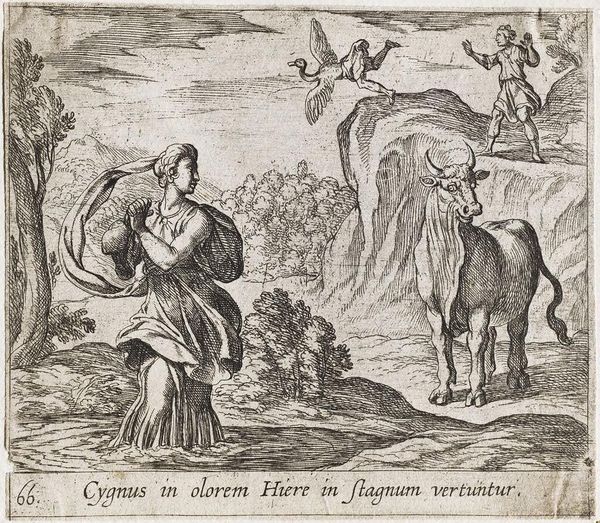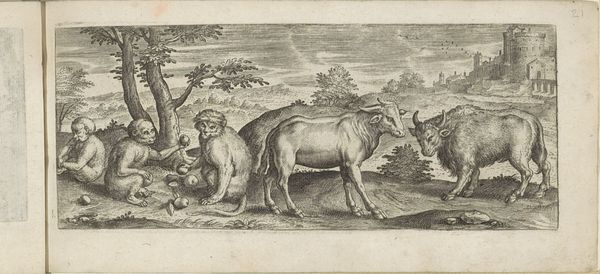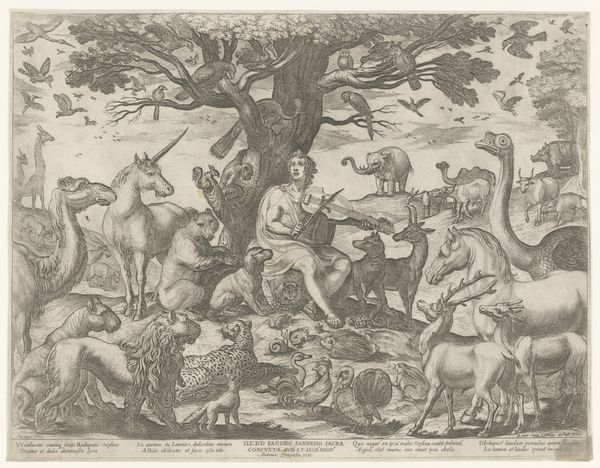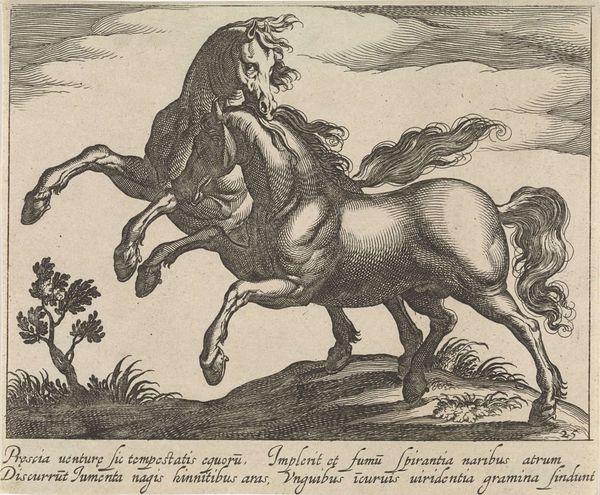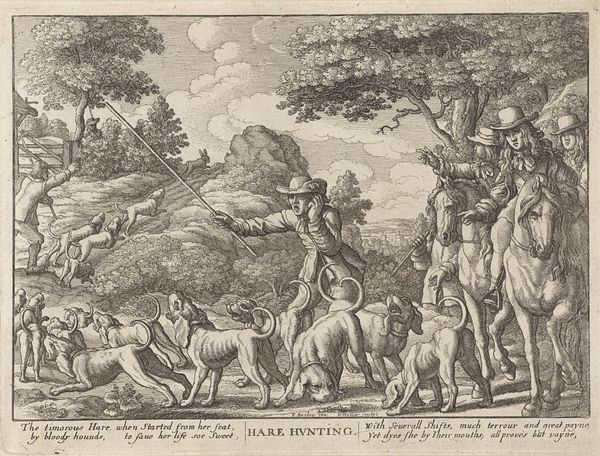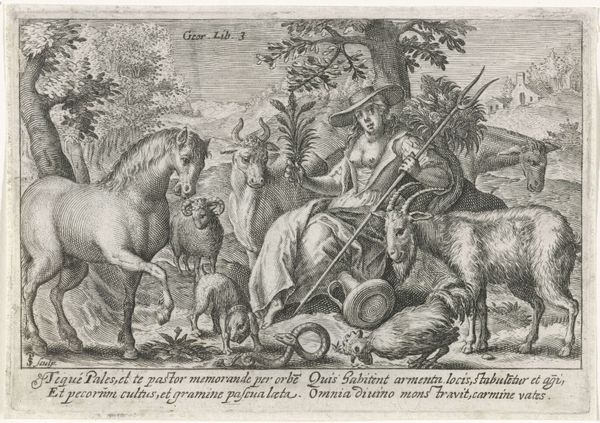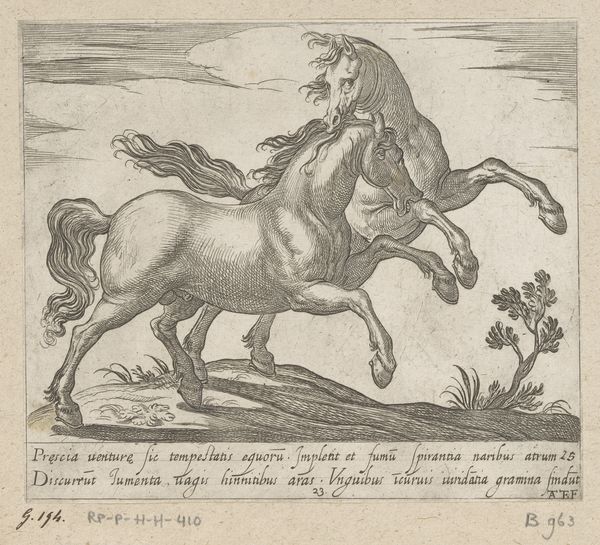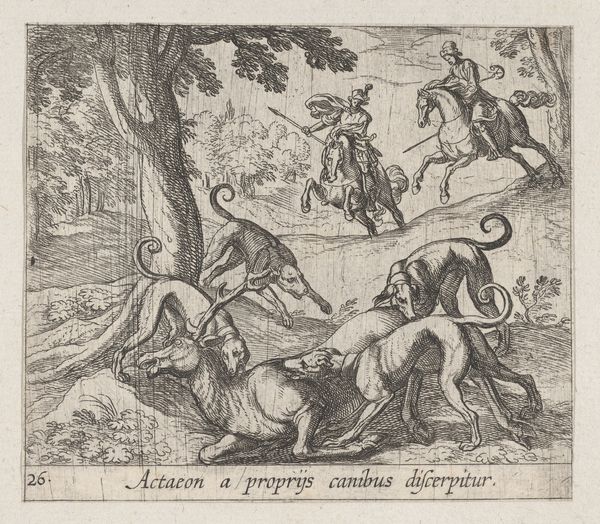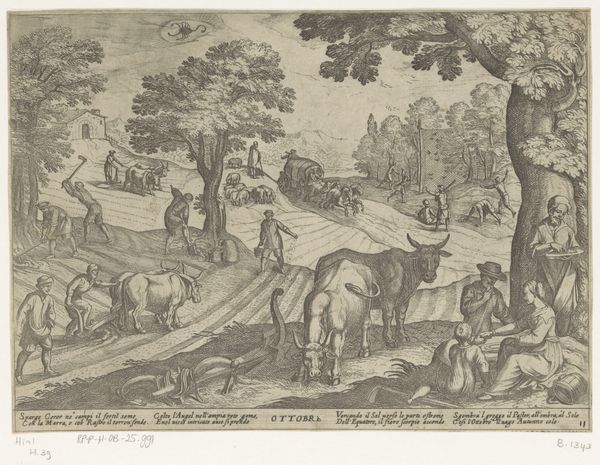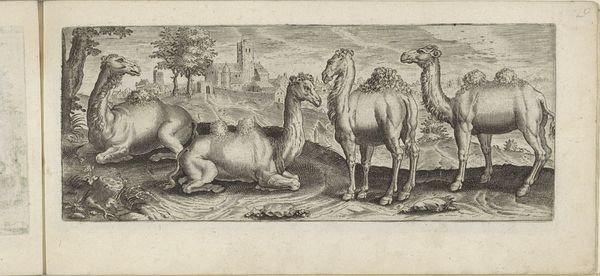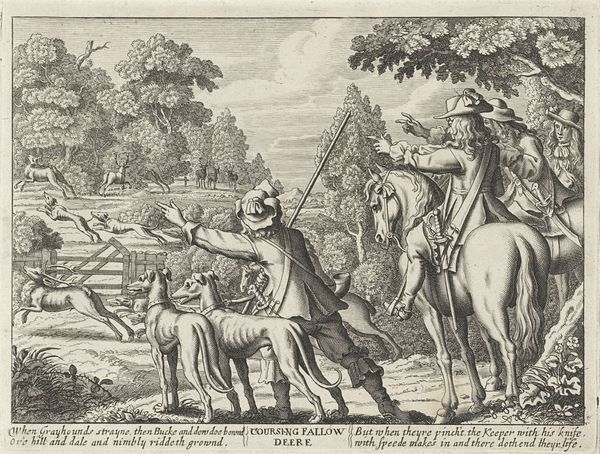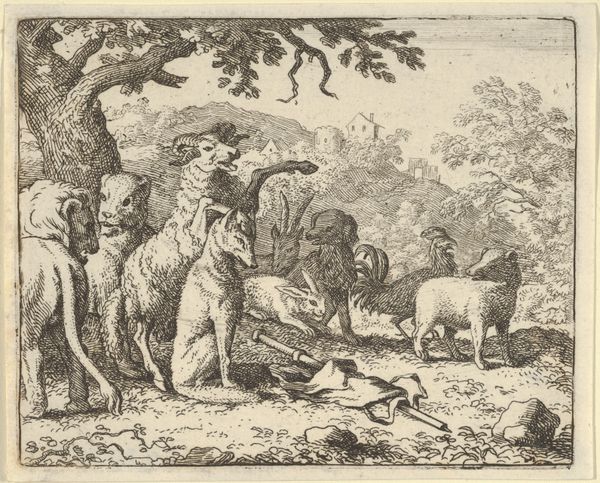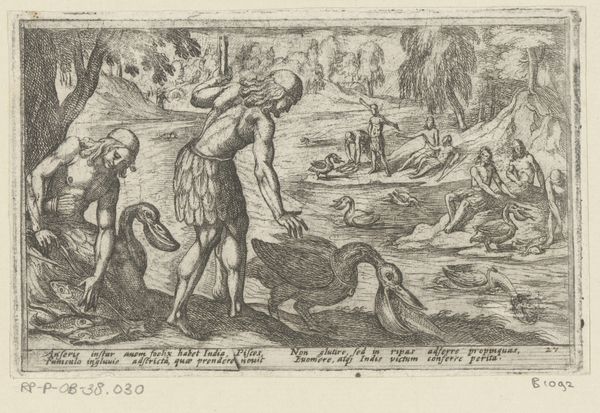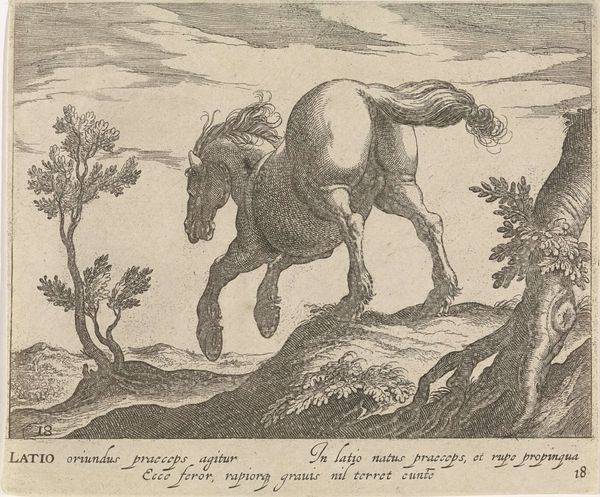
Plate 66: Cycnus and Hyrie (Cygnus in olorem Hiere in stagnum vertuntur), from Ovid's 'Metamorphoses' 1606
0:00
0:00
drawing, print, ink, engraving
#
drawing
#
narrative-art
# print
#
landscape
#
figuration
#
form
#
11_renaissance
#
ink
#
line
#
history-painting
#
engraving
Dimensions: Sheet: 3 15/16 × 4 9/16 in. (10 × 11.6 cm)
Copyright: Public Domain
Editor: This is Plate 66: Cycnus and Hyrie from Ovid’s *Metamorphoses* by Antonio Tempesta, created in 1606. It's an engraving in ink. It strikes me as a rather busy composition. What catches your eye, looking at this artwork? Curator: I see a potent visual narrative deeply rooted in transformation and loss. Notice how Tempesta uses contrasting figures – the swan, the bull, the weeping woman. Consider the symbolic weight. Swans, even then, carried associations with transformation. They link to both Apollo and narratives of disguise and deception. Editor: So, you are saying these characters were all known symbols back then? Curator: Precisely! Think of the bull, often linked to power and virility, but also sacrifice. And the woman—Hyrie—becomes a lake of tears! This echoes ancient myths where grief transforms the body into natural features. Can you feel the weight of cultural memory being carried in these forms? Editor: It does create a sense of overwhelming sorrow and dread when you know all these stories. What do you make of the landscape itself? It feels… tumultuous, almost? Curator: It is! The setting reflects the inner turmoil. See the jagged rocks, the dense foliage? They’re not just decoration. They amplify the emotional charge of the scene, underscoring the characters' internal states. Tempesta brilliantly mirrors the metamorphic themes in the very environment. He masterfully weaves individual and environmental experiences. Editor: I see the connection now. I appreciate how the symbols compound the narrative! Curator: And remember, symbols evolve over time, taking on new meanings, so we need to be aware of these evolving references to really understand the visual and historical record. Editor: I learned that even familiar imagery can reveal deeper cultural stories. Thanks for broadening my perspective on art history.
Comments
No comments
Be the first to comment and join the conversation on the ultimate creative platform.
